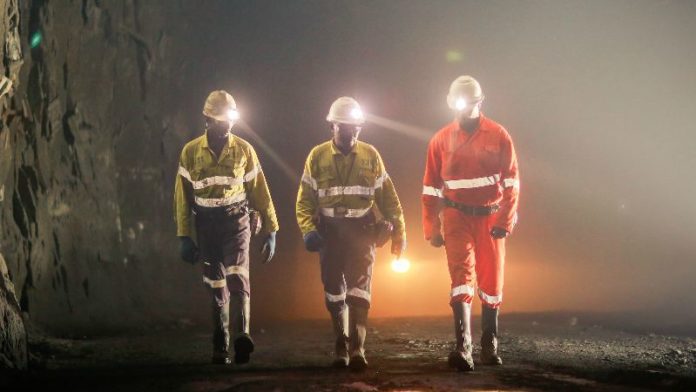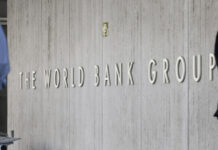
CONSENSUS among economists is that South Africa is due for “more of the same” in 2020 unless Government can bring about urgent reform.
Whilst the narrative in South Africa’s mining sector takes its cue from broad economic and political strokes, there are some specific investment themes worth acknowledging.
Admittedly not quite the Delphic oracle, Miningmx has attempted to capture a few likely ‘stories’, themes and even outcomes worth watching in the mining sector this year.
JSE FLIGHT
Up to three major mining companies, with a current combined worth of R320bn, could either leave the JSE or make the bourse its secondary investment market.
AngloGold Ashanti has said it would seek an offshore listing provided it successfully sold Mponeng and Mine Waste Solutions, the South Africa operations it has put on the block. Sibanye-Stillwater has also identified an offshore listing as part of its long-term strategy, whilst Gold Fields’ continued primary presence in Johannesburg would be up for question were it to finally cut its losses and sell its remaining South African mine, South Deep.
The determinant in the latter two companies may well be gold price strength. Gold Fields said the future ownership of South Deep would be considered once it had established a track record of profits. For Sibanye-Stillwater, removing debt is its primary focus which turns on generating wad-loads of free cash … which brings us to our second theme.
PRECIOUS METAL BONANZA
“Gold’s long-term prospect is up, up and up,” said Mark Mobius of Mobius Capital Partners in an interview with Bloomberg News in September. The year-long bull run in gold which supported these claims were given further support in the holiday period following the escalation in Middle East tensions on January 2 with the US assassination of General Qassem Soleimani, head of Iran’s elite Islamic Revolutionary Guard Corps’ Quds Force.
“The combination of central bank stimulus and rising food and energy prices will only add to our view that inflation or the risk of rising inflation will become a theme in 2020,” said Ole Hansen, head of commodity strategy at Saxo Bank. “Gold’s behaviour during the past few months supports this view”.
Continued rand weakness is also likely which will assist in dollar revenue/rand-based cost companies such as our miners, although there may be some inflation catch-up.
With its exposure to gold as well as platinum group metals palladium and rhodium may add a bit of extra sparkle to Sibanye-Stillwater.
LEGAL WRANGLING
Set against a promising outlook for companies exposed to precious metals is the prospect of proposed amendments to the cornerstone mining regulation that is the Minerals and Petroleum Resources Development Act (MPRDA).
South Africa is a fully paid-up member of regulatory uncertainty and sovereign discount, so it’s questionable whether the country’s miners will suffer demerits specifically based on changes to the MPRDA, but uncertainty regarding the legislation won’t help.
The Department of Minerals & Energy has given the mining sector until around mid-February to lodge comments on the proposed amendments which Peter Leon, an attorney at Herbert Smith Freehills describes as “… either unduly burdensome on the holder of or applicant for a prospecting or mining right, or conflict with the existing provisions of the MPRDA”.
CLIMATE CHANGE …
… Or more specifically coal. According to a report by JP Morgan, the extractive industries are “right in the cross-hairs” of the climate change movement which was well and truly absorbed into popular consciousness in 2019/18.
“With the mining sector representing 12% of global greenhouse gas emissions, we believe climate change represents a structural investment theme for the mining sector, replete with significant implications for demand, volumes, costs and valuation,” it said in a report last year.
Including total coal burn, the sector is a shocking 40% of global emissions – one of the sums that is giving Anglo American heartburn in respect of what it intends to do with its South African coal export mines.
The group sold its domestic coal mines in 2018, but pressure to do likewise with its export coal assets has seen CEO, Mark Cutifani, accelerate the group’s thinking on its ‘just transition’ approach to its mines. All eyes then on the group’s April Sustainability Report during which it will detail its plans for South African coal.
GLENCORE SUCCESSION PLANS
Glencore was identified in a late December HSBC report as one of the few diversified mining firms still showing value. Shares in the Swiss-based miner have lagged owing to exogenous factors such as a US Department of Justice investigation into its trading activities. The UK’s Serious Fraud Office has since added its own study into Glencore’s trading activities.
The upshot of these investigations, as well as Glencore’s heavy exposure to coal mining, is that the firm is due an image makeover, which may be assisted by potential leadership change. Long-standing CEO, Ivan Glasenberg, said in December he would think about succession once he’d applied the finishing touches to existing senior management plans in 2020. This is about a year sooner than at first expected. It’ll make for some interesting newsflow.











